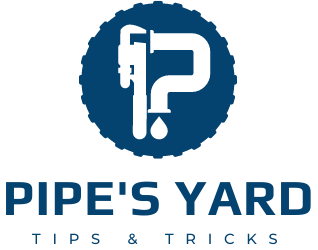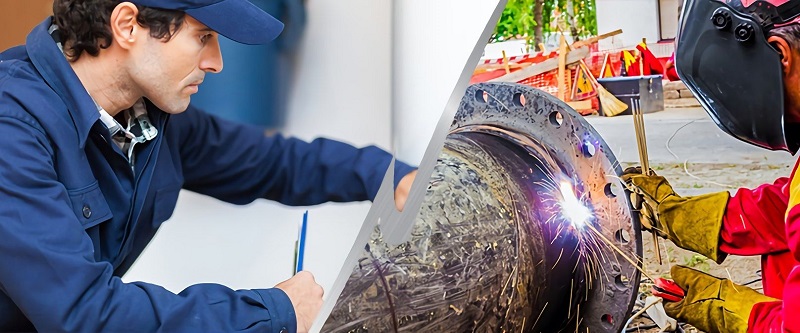Pipefitters and plumbers are both professionals who install and ensure the smooth functioning of your plumbing systems. Just like any profession, conflicts or tensions can sometimes arise between pipefitters and plumbers.
But why do pipefitters hate plumbers? There’s no known evidence to posit that pipefitters hate plumbers. However, these professionals have defined job roles and certifications to back up their level of expertise.
Read on as we shed light on the relationship between pipefitters and plumbers and debunk the misconception about them. Ok, let’s dive in.
The History of Pipefitting and Plumbing Professions
The history of pipe fitting can be traced back to ancient times when artisans crafted piping systems for water transportation. In Egypt, copper piping was used for irrigation and water supply. While in Rome, lead piping was used for public baths and fountains.
During the Middle Ages, plumbing was a separate trade known as “plumber.” A name derived from the Latin word for lead, “plumbum.” Plumbers were responsible for water supply and drainage systems in buildings.
In the 1800s, industrialization increased the demand for complex plumbing systems. This led to the emergence of pipefitting as a distinct profession. Pipefitters were skilled in installing and maintaining piping for industrial purposes.
They adhere to strict specifications and safety standards. Over time, technological advancements led to more specialized and distinct tasks for each profession.
Why Do Pipefitters Hate Plumbers?
There’s no known fact to establish any animosity between pipefitters and plumbers. However, there could be some disagreements between their job roles which might have been misunderstood as hate.
While there may be some overlap in skills, pipefitters and plumbers have different areas of expertise and job scope.
Are Pipefitters And Plumbers The Same?
Pipefitters are experts who specialize in installing, maintaining, and repairing pipes that carry gasses, liquids, and other materials.
Plumbers, on the other hand, are professionals who specialize in the installation, repair, and maintenance of pipes and fixtures. These pipes are used to carry water, sewage, and gas in residential, commercial, and industrial buildings.
Do Pipefitters And Plumbers Do The Same Job?
Their job scopes are different. Plumbers are responsible for tasks, such as
- Installing, repairing, and maintaining plumbing systems for water supply, drainage, and sewage
- They also diagnose and fix plumbing issues
- Read and interpret blueprints and specifications
- Collaborate with other construction professionals to ensure the plumbing systems are installed correctly
On the other hand, pipefitters are responsible for tasks, such as
- Installing, assembling, and repairing pipes and pipe systems for industrial processes, power plants, refineries, and HVAC systems
- Read and interpret blueprints and technical drawings
- Weld and braze pipes
- Collaborate with other construction professionals, such as welders and engineers. This helps to ensure that the pipe systems are installed correctly and meet project requirements
Do Pipefitters And Plumbers Have The Same Skill Set?
Plumbers are licensed professionals who undergo extensive training and apprenticeships. Some of the most common plumbing certifications include the Journeyman Plumber and the Master Plumber certificate. Plumbing skills are
- Creating work schedules
- Working in confined locations and with fragile parts
- Basic math skills and the ability to read blueprints are required
- Communication skills are required to supervise other team members and bid on projects
- Understanding the layout of plumbing systems in different types of buildings
- Building relationships with customers and enterprises
- Skilled in soldering, welding, and working with materials such as copper, PVC, and steel pipes
On the other hand, Pipefitters are trained and certified to work with specialized equipment and tools. They are trained in handling high-pressure piping systems.
Some of the most common certifications include Certified Welder, Certified Welding Inspector, and Certified Welding Educator. Skills in Pipefitting include
- Excellent welding skills in small and large pipes (filet and butt welds)
- Understanding of blueprints, schematics, and technical specifications
- Bending, threading, and grinding of pipes
- Working with large pipes requires trench and hydraulic shoring skills
- Installation and shoring abilities for fitting pipes below and above ground
- Specialized skills, such as welding, brazing, threading, and grooving of pipes
- They may also work with specialized tools and equipment, such as pipe cutters, threaders, and welding machines
Do Pipefitters And Plumbers Have The Same Career Prospects?
Pipefitters and plumbers have different career prospects based on their areas of expertise and work environments. Plumbers find opportunities in residential, commercial, and municipal projects. As well as in maintenance and repair services.
They also choose to specialize in areas such as gas fitting, fire protection systems, or sustainable plumbing technologies. This can open up additional career opportunities.
On the other hand, pipefitters often work in specialized industries, such as oil and gas, power generation, and chemical processing. Pipefitters also specialize in steamfitting, HVAC (heating, ventilation, and air conditioning), and refrigeration.
They have the privilege of progressing to supervisory or management roles. Both professions offer the potential for entrepreneurship. Both skilled pipefitters and plumbers can start their businesses and become self-employed.
Tools and Equipment
Both plumbers and pipefitters use a variety of tools and equipment in their work. Some common tools used by both professions include pipe wrenches, pliers, cutters, and other hand tools.
However, pipefitters also use welding equipment, torches, and other specialized tools for soldering, brazing, and joining pipes, as welding and brazing are important skills in their line.
Competition For Jobs
Pipefitters and plumbers are in high demand in construction and manufacturing, with increasing needs due to an aging workforce and construction growth. However, competition between the two professions can create tension despite the demand.
The Role of Unions in the Trades
Unions are strong in the plumbing and pipefitting industries because they look out for workers’ best interests. Tradespeople who join a union often enjoy greater employment stability, higher pay rates, and other perks.
However, unions have the potential to intensify inter-profession rivalries because unionized workers are more likely to put the needs of their industry ahead of those of other sectors.
Pipefitter vs Plumber Salary
Plumbers and pipefitters have similar national average salaries, as classified by the US Bureau of Labor Statistics. Despite being categorized under the same job classification, the earnings of pipefitters and plumbers may vary due to factors such as experience, location, and place of employment.
On average, pipefitters earn approximately $54,000 annually, surpassing the earnings of experienced plumbers, who make around $50,000 annually.
What Do Pipefitters Do That Plumbers Don’t?
Pipefitters and plumbers have some key differences in their scope of work due to legal restrictions. While plumbers are legally allowed to do anything that pipefitters can do, pipefitters are prohibited from doing certain plumbing work, such as sanitary drainage.
Furthermore, plumbers can also perform pipe fitting tasks with additional certifications. Although some pipefitters claim superiority due to their specialization in industrial work, licensed plumbers have the same legal authorization and capability to perform those tasks.
Can a Pipefitter Be a Plumber?
Yes, a pipefitter can also become a plumber. Pipefitters can gain additional certifications or training to become licensed plumbers. This would allow them to perform a wider range of plumbing tasks, including sanitary drainage.
Also, operate as licensed plumbers within the scope of their certifications and qualifications.
However, it’s important to note that licensing requirements and regulations vary by jurisdiction. Therefore, it’s essential to check the specific requirements in the area where the pipefitter seeks to become a plumber.
How to Prevent Misunderstanding From Pipefitters and Plumbing?
Preventing misunderstandings and conflicts between pipefitters and plumbers can be achieved through effective communication, collaboration, and clear expectations. Here are some tips:
- Clearly define the roles and responsibilities of both pipefitters and plumbers on the project or job site
- Create a culture where they feel comfortable expressing their concerns, opinions, and ideas
- Address conflicts between them early
- Enhancing their skills and knowledge can increase their expertise and confidence in their respective roles
- Encourage collaboration or cross-training opportunities to enhance their understanding of each other’s work
- Create a positive work environment where mutual respect, appreciation, and recognition are valued
Conclusion
Pipefitters and plumbers’ professions play essential roles in the plumbing industry, with different skill sets and areas of expertise. The misconception of why pipefitters hate plumbers is not proven. Rather, they have defined job roles.
This includes differences in job responsibilities, skills, licensing, certification requirements, and job competition. By comprehending the diverse factors that contribute to the conflict, tradespeople can strive towards enhanced collaboration and prosperity in the industry.

